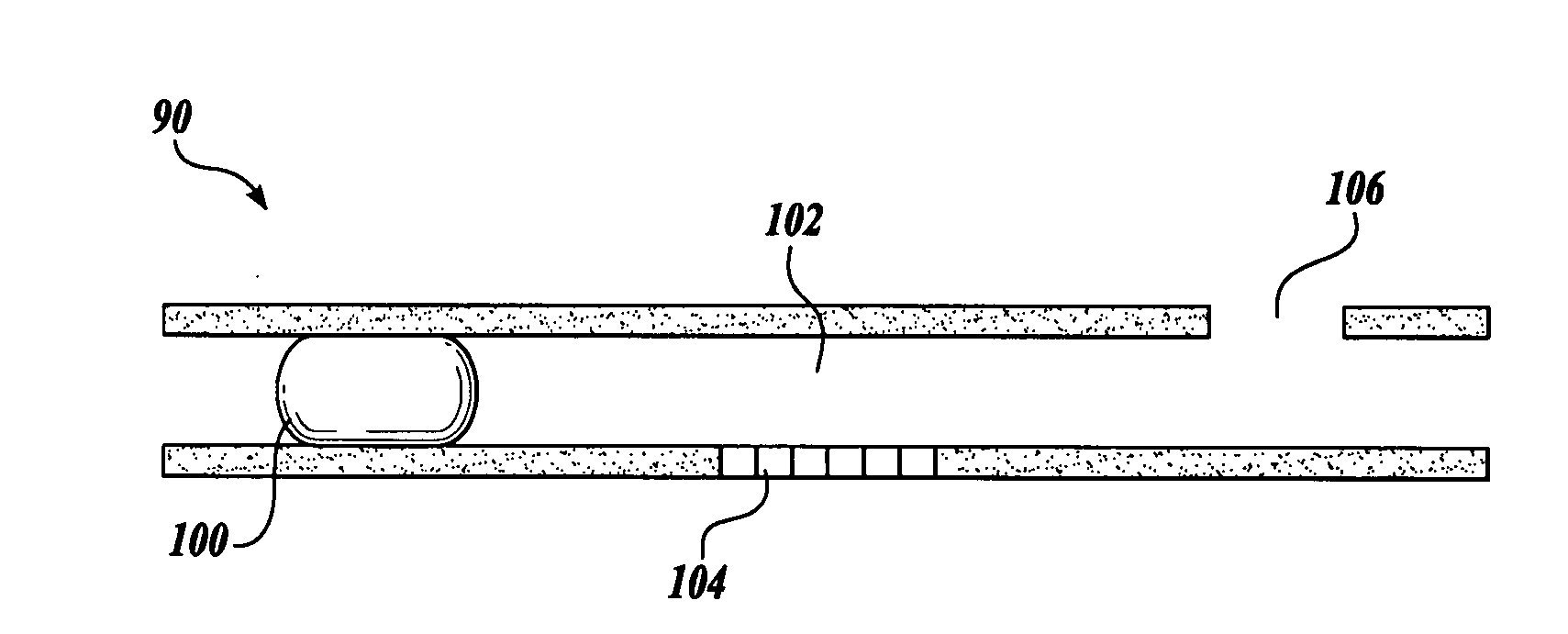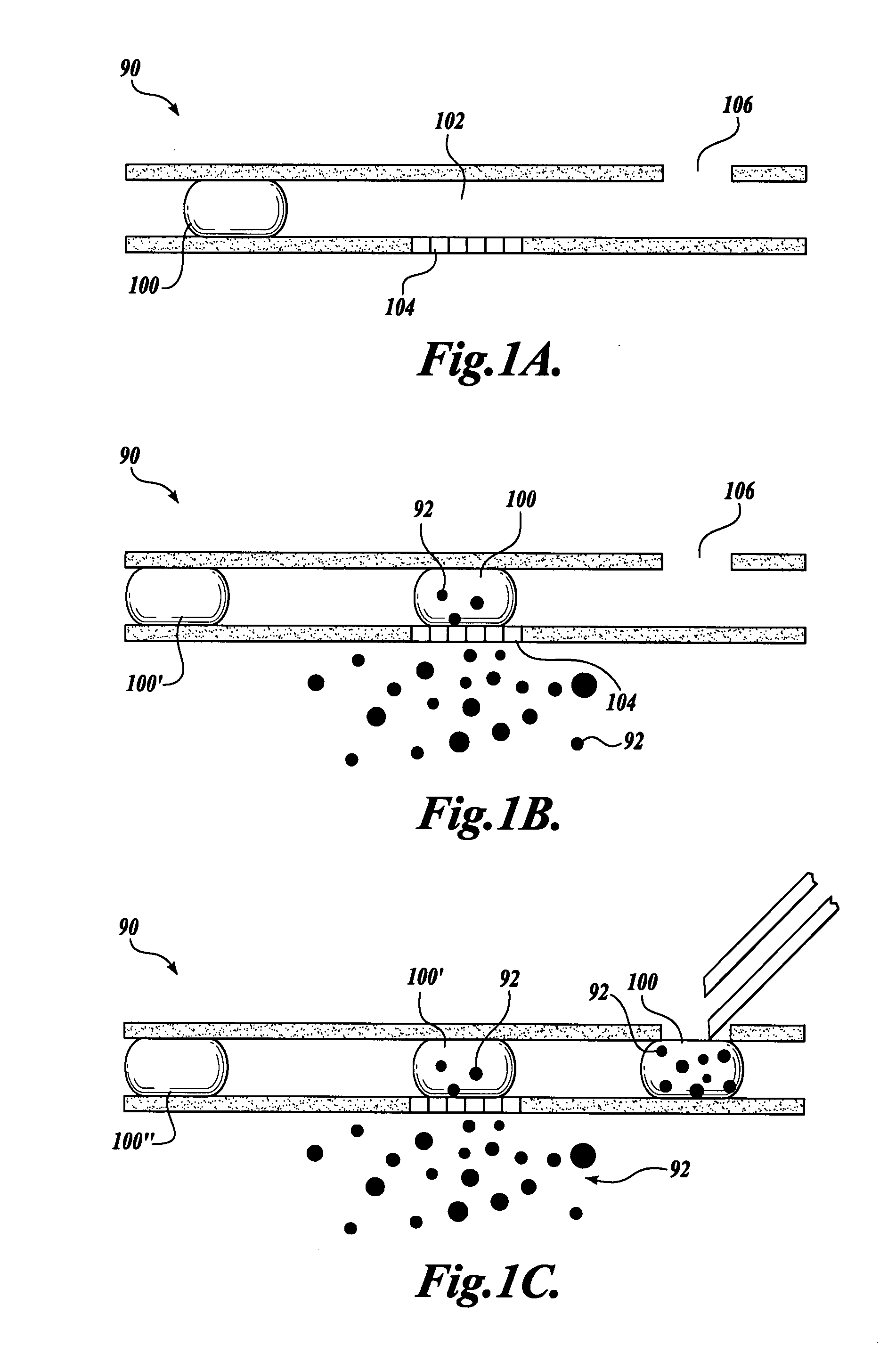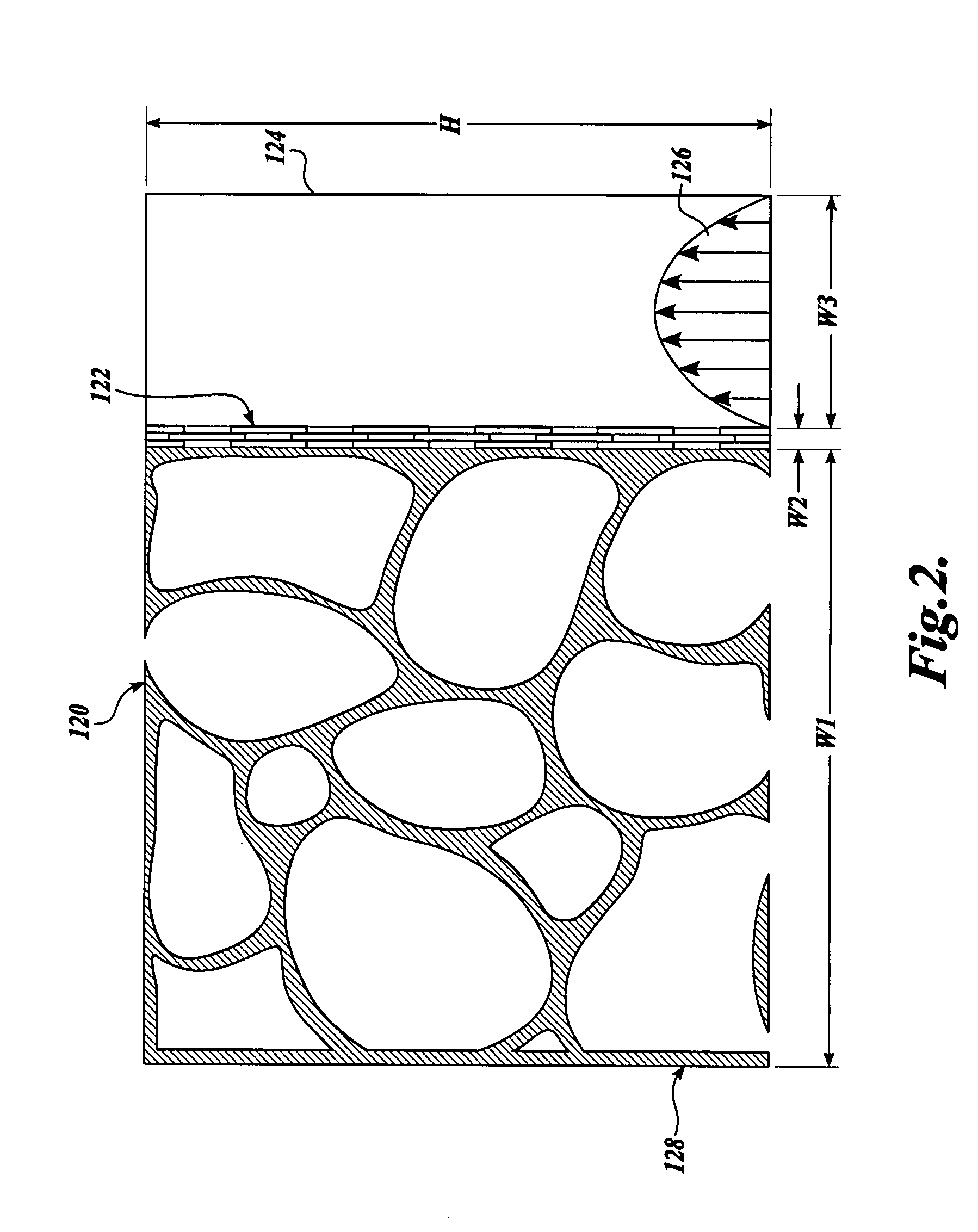Droplet-based digital microdialysis
a microdialysis and droplet technology, applied in the field of microdialysis methods and microdialysis probes and devices, can solve the problems of large (relatively) dead volumes, rough spatial resolution and traumatic tissue damage, and limited application of microdialysis technology
- Summary
- Abstract
- Description
- Claims
- Application Information
AI Technical Summary
Benefits of technology
Problems solved by technology
Method used
Image
Examples
Embodiment Construction
[0087]The present invention provides microdialysis methods, probes and devices using discrete perfusate droplets for perfusion of a microchannel.
[0088]Nomenclature
[0089]c concentration of particles (L−3)
[0090]D diffusion coefficient (L2T−1)
[0091]H height of the probe chamber used in simulations (L)
[0092]p1, p2 pressure port number
[0093]{right arrow over (q)} flux of particles in motion (L−2T−1)
[0094]t time (T)
[0095]{right arrow over (v)} flow velocity (LT−1)
[0096]v1, v2 HMCV valve number
[0097]W1, W2, W3 dimensions of the problem domain for simulations (L)
[0098]W width of channel (L)
[0099]w width of differential channel used in pneumatic control (L)
[0100]θ contact angle of droplet to microchannel (°)
[0101]σ surface tension (mT−2)
[0102]In one aspect, the present invention provides methods for microdialysis.
[0103]The digital microdialysis method of the present invention replaces continuous perfusate flow used in conventional microdialysis with a marching-type flow of the perfusate wher...
PUM
 Login to View More
Login to View More Abstract
Description
Claims
Application Information
 Login to View More
Login to View More - R&D
- Intellectual Property
- Life Sciences
- Materials
- Tech Scout
- Unparalleled Data Quality
- Higher Quality Content
- 60% Fewer Hallucinations
Browse by: Latest US Patents, China's latest patents, Technical Efficacy Thesaurus, Application Domain, Technology Topic, Popular Technical Reports.
© 2025 PatSnap. All rights reserved.Legal|Privacy policy|Modern Slavery Act Transparency Statement|Sitemap|About US| Contact US: help@patsnap.com



